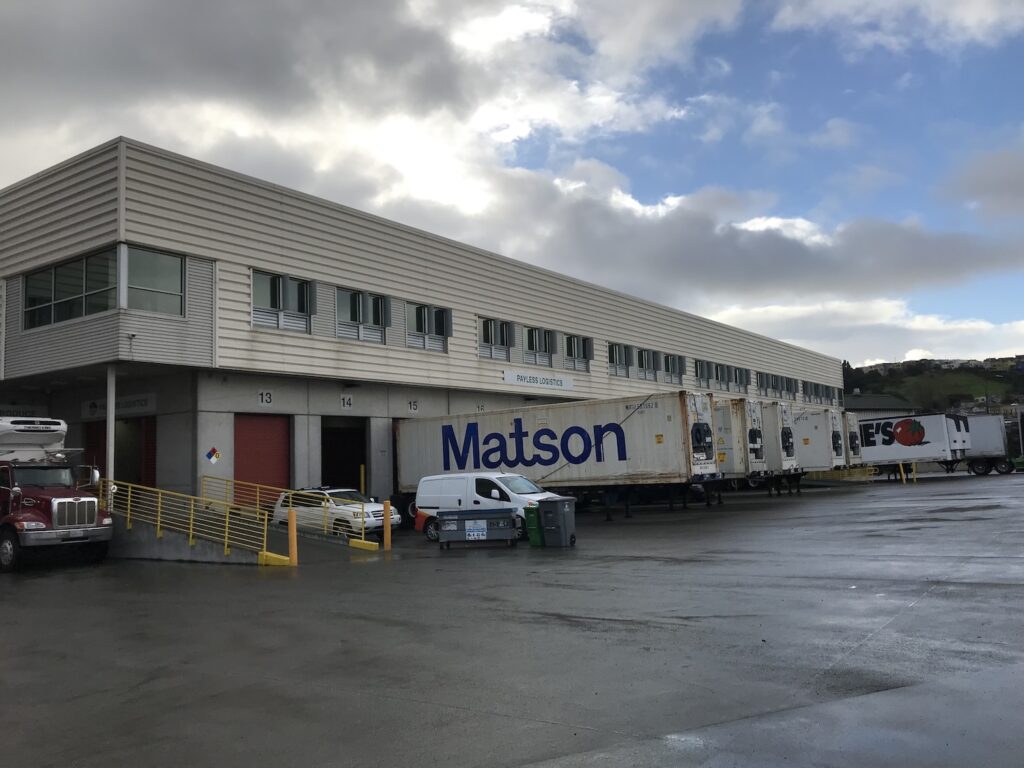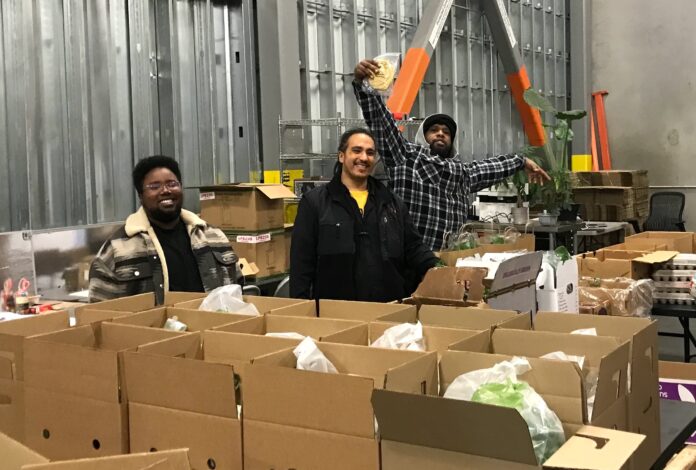In a cold corner of a cavernous warehouse in Bayview Hunters Point, four men box fresh produce. Unlike the other merchants in the sprawling SF Market, the men hope they are not just feeding their community for the day. They hope their Bayview Community Co-Op can help reform an unjust, unhealthy food system and provide the local economy that Bayview Hunters Point has demanded for generations.
“What we’re trying to do is proof of concept, to use traditional business terms,” Anthony Khalil, Food Sovereignty Director of Bayview Hunters Point Community Advocates, says while double-checking the 30 or so weekly produce boxes headed out. “To show that there is an economy for this within Bayview Hunters Point.”
The co-op, launched in 2019 and accelerated by the pandemic, echoes the call for justice by MLK and repeated by generations of Bayview Hunters Point activists (many of those leaders Black women, Khalil emphasizes). While recognizing the immediate need of access to healthy food, the organization wants to bring the whole circular economy of food production—and the jobs that go with it—into Bayview Hunters Point, as well.
“We’re leaning into self-determination, so that we’re not always looking to the outside for resources,” Khalil said. “Our hope is to create a pathway to self-determination that incorporates health and wellness.”
Chris Wakefield, Sales and Marketing Lead of the co-op, double-checks the double-check. “Our core tenet is that everything comes from California, and everything is seasonal,” Wakefield says.
Boxes range between 10 to 12 pounds of produce, the bulk from small organic farms like immigrant-owned Yeyi Organics in Holllister and the women-owned Veritable Vegetables organic-produce distributor based in San Francisco. Today’s shipment brims with crisp butter lettuce, bright Italian parsley, glowing beets, and even some Toki mushrooms.
Organic produce of this quality could cost upwards of $50 per box but is available on a sliding scale of $19 for a discount box, $29 for full price, and $1 for an EBT-subsidized box.
“You might see us pop up more on social media this year,” Wakefield said. “Shout us out on social media to get a free box, for example.”
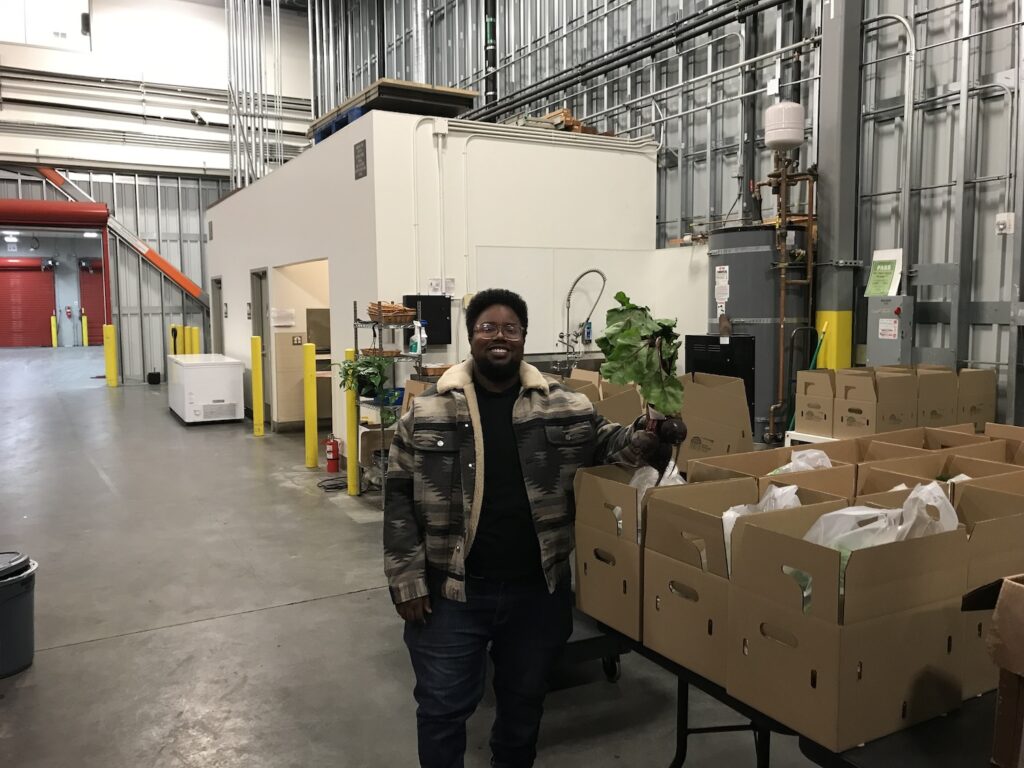
Even with consistent outreach and solid support, the small non-profit understands its chances of survival. “We’re the dolphin swimming among the sharks,” Khalil said.
Heavy industry circles this “dolphin” organization, a stark reminder of how capitalism reduces basic needs like food to commodities, material to be bought and sold for profit. With their own ancestors boxed and sold as commodities, the co-op takes an active stand against the historic devastation of unbridled capitalism—that everything, including people, can be reduced to a price.
(“One day we must ask the question, ‘Why are there forty million poor people in America?’ When you ask that question, you begin to question the capitalistic economy,” the Rev. Dr. Martin Luther King, Jr. said in his final speech to the Southern Christian Leadership Conference in 1967.)
“The challenge is making sure that people understand our mission,” Wakefield said. “We’re a Black-led, neighborhood, grassroots organization.”
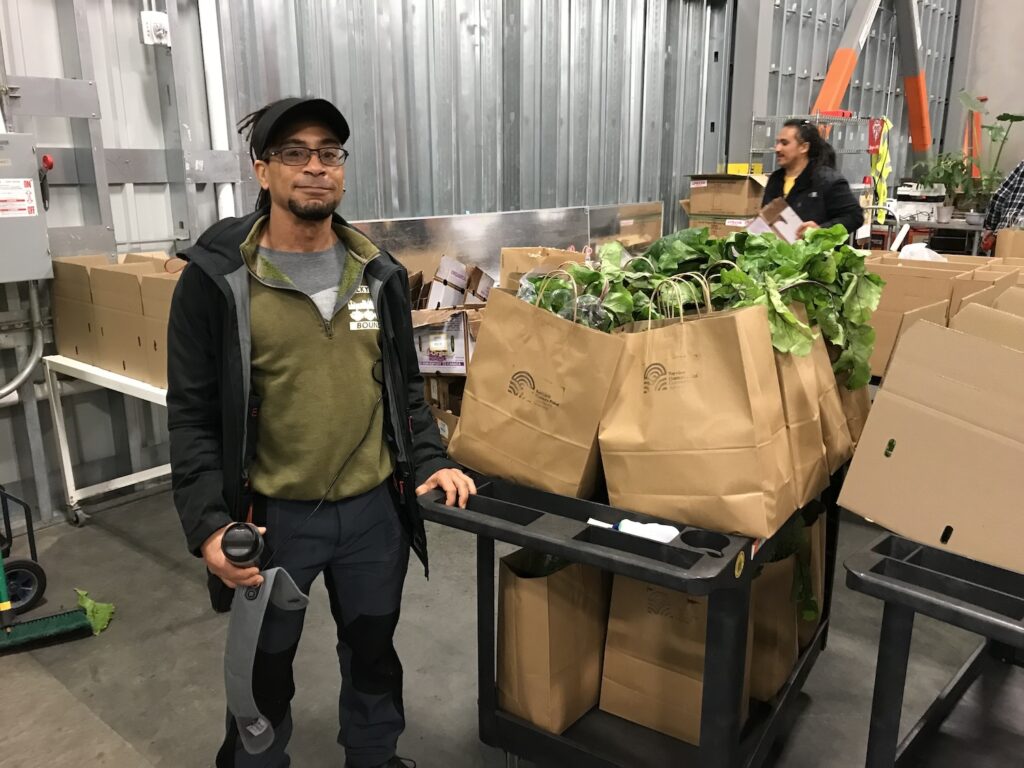
With the boxes quadruple-checked, Davido Crow, Food Pharmacy Coordinator, can step aside to share the co-op’s healthy relationship with the Food as Medicine Collaborative. Instead of glorifying the latest phone as innovative, the collaborative’s innovation has the capacity to change—even save—lives.
Dr. Rita Nguyen, founder of the collaborative in 2015, recognized that 70% of low-income patients served by community clinics were food insecure, lacking reliable access to affordable and nutritious food. But when she “prescribed” a healthy diet, her patients shared that her food prescription “stressed them out even more because, to go get healthy food, they had to take two buses to get across town,” Janna Cordeiro, Associate Director of Food as Medicine, explained by phone.
The history of redlining in San Francisco didn’t just push BIPOC communities away from affordable housing, steady employment, safe schools, and dependable healthcare. It also created barriers to a healthy diet.
“There’s a lot of energy right now to recognize the connections between food insecurity, health inequities, and health justice,” Cordeiro said. In 2022, the collaborative served 2000 people over 13,000 bags of food through their partnerships with Bayview Hunters Point Community Advocates, Arcadio’s Produce, and Califa Produce.
Everyone who studies food insecurity agrees on one point: The pandemic opened up a world of hurt for those with food accessibility issues. Yet it also opened up a world of possibilities.
“The pandemic hit, and everything changed.” Cordeiro said. Overnight, reliable sources of food for lower income communities in the Bay Area—senior centers, shelters, schools, daycare, churches, food pantries—closed.
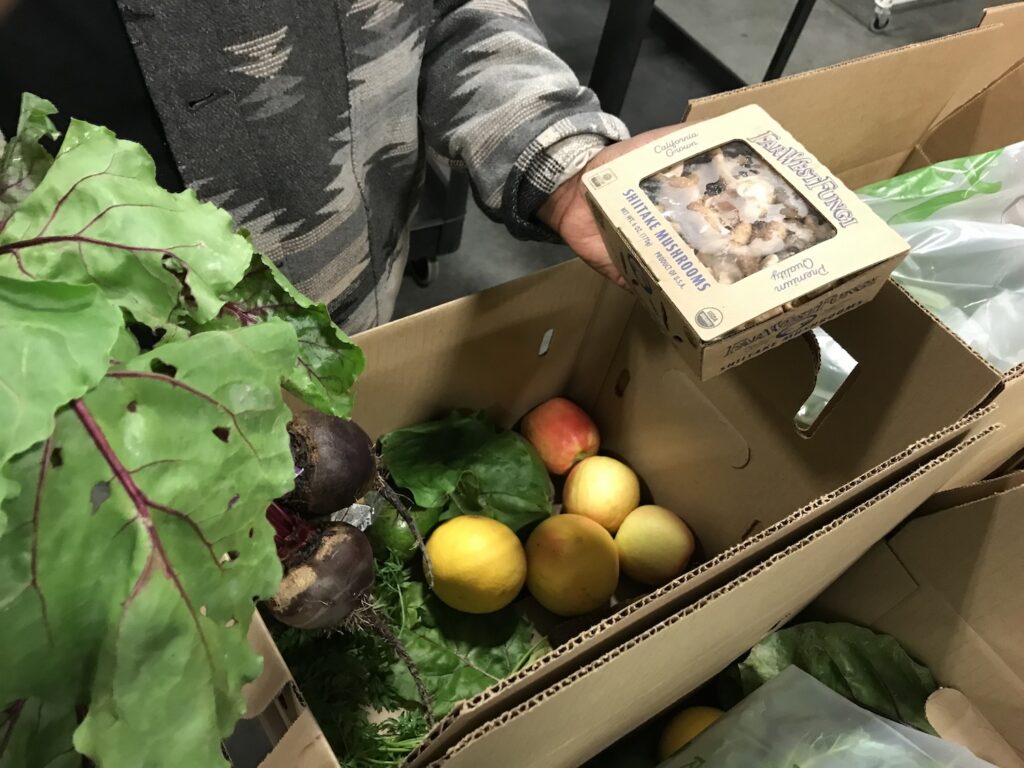
“Our emergency preparation has focused, mostly, on earthquakes,” Cordeiro said. “And we were not prepared for a situation where we could not gather in person.” Cordeiro recalls Bayview’s iconic Mother Brown’s setting up makeshift services outside their building “like a MASH unit.”
“And I saw nearly 800 people in line in front of the Ruth Williams Opera House. It broke my heart driving by there.”
Khalil credits the SF Market for recognizing the dire need in his community during the pandemic and asking how the market could help. “We said, well, we need a space. The pandemic crisis created the opportunity, but it also challenged their epistemology, their systems of knowledge. So now we have a five-year lease.”
In addition to the Food as Medicine Collaborative, another development that gained steam from the pandemic was the creation of the District-10 Food Empowerment Market Pilot, which plans for a physical market to open before the end of the year to serve the Bayview.
Maggie Sugarman, Director of the D10 Community Market, respects the mission of the BV Co-Op to build a circular economy based within the Bayview. But her organization focuses on the daily needs.
“Our primary goal is to make sure that our families have the food they need to get through the month,” Sugarman said by phone. She cited distribution and allocation issues, as well as food waste (which the SF Market’s Food Recovery Program tries to address), as pressing issues.
“There’s plenty of food to go around,” Sugarman said. “That being said, our work can’t go anywhere without their (BV Co-Op’s) work.”
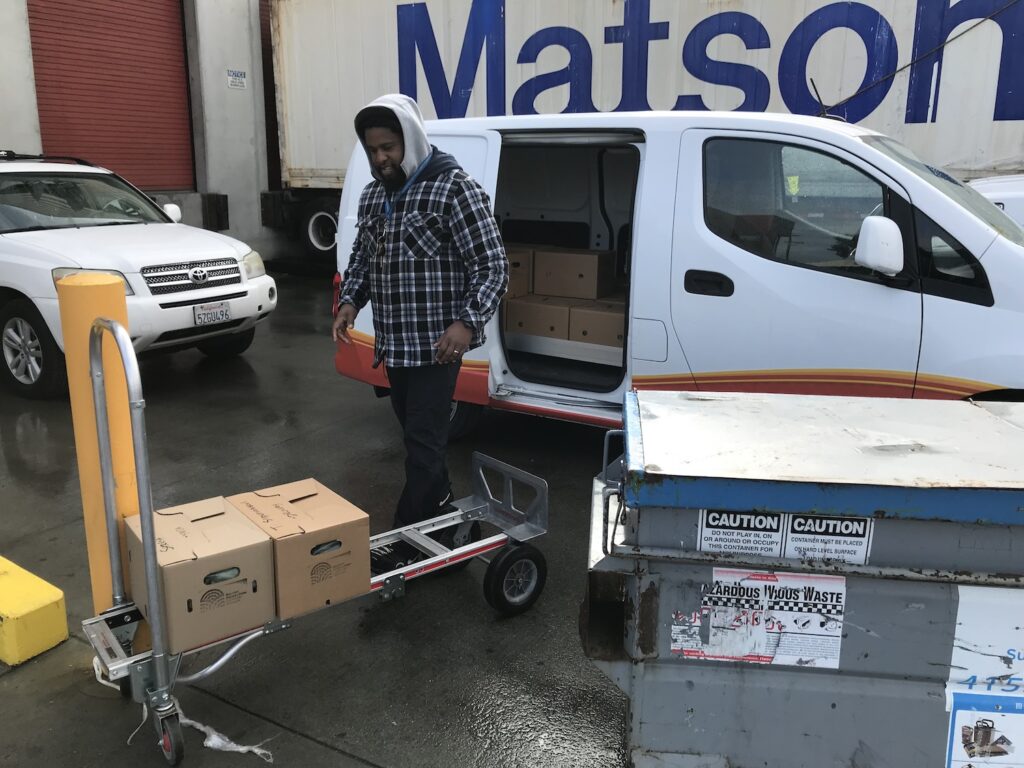
Johnta Durden, Healthy Retail Coordinator, loads the boxes onto a cart and rolls them out to a white delivery van. Durden visits corner stores in the Bayview’s food desert and requests meager shelf space for fresh fruit and vegetables, at no cost to the owner for 90 days, planting the seed of a local economy by creating access to the product.
He remembers visiting one of the stores with his young daughter, who went straight to the ice cream box. He understood the puzzled look on her face when he saw what was inside.
“They put those little liquor bottles inside the ice cream cartons. Little kids think they’re about to see some ice cream, and it’s all liquor. Any other store, it’s ice cream.”
Durden stacks the last box of organic produce into the truck. He’ll drive the boxes to his neighbors, some of whom will wait on their front porches to offer him a hug when their food arrives.
To return to the words of Dr. King: “Our goal is to create a beloved community, and this will require a qualitative change in our souls as well as a quantitative change in our lives.”
